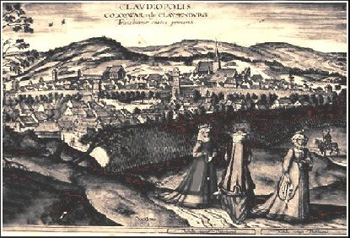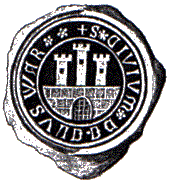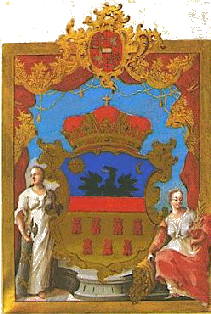
Cluj Napoca
2000 years of history
Cluj-Napoca, the historical capital of Transylvania, is one of the most important cultural and economical cities of Romania. It lies in the centre of the country, at the crossroads of many national and international highways.
The fifth town of the country, Cluj-Napoca is a city with two seperate names: Napoca - the name of the ancient Dacian fortress and Cluj, which comes from the Latin word "clusum". Clusum means to be 'closed', and this is due the fact that Cluj is protected by the surrounding hills. The city has been known by its German name - Klausenburg, or its Hungarian name - Kolozsvar, being also a very important cultural and political centre for the Transylvanian Hungarians.
Located along the Somes river valley, Cluj's surface is about 180 sqKm and the population is over 320,000 resident inhabitants and about 100,000 students.
The territory of Cluj has been inhabited since ancient times (paleolithic). At the site of an old Dacian fortress, a Roman castrum was built after the Roman conquest of Dacia (106 AD). By the year of 124 AD, our city was upgraded as a Roman "municipium" having the official name 'Municipium Aelium Hadrianum Napocense', which afterwards became the capital of Dacia Porolissum.

The constant pressure of people migrating along the vast, exposed boundaries of Dacia led the emperor Aurelian to withdraw the Roman army and administration in 271-275. The upper classes and many urban dwellers followed, but the majority of the population who lived in the countryside were engaged in agriculture and stayed behind. For nearly 800 years after the Roman withdrawal, Dacia was overrun by a series of people migrating: the Visigoths, the Huns, the Gepidae, the Avars, the Slavs.
Beginning from 11th Century, some Romanian local political and admistrative formations emerged in the former Dacian region. The Hungarians, who settled in Pannonia at the end of 9th Century, entered Transylvania during 10th Century and overwhelmed the Romanian kniezates (local administrations) that they encountered here.
Being under Hungarian domination, Cluj receiving on the 19th of August 1316 the "civitas" title, which practically means the status of being a town. The events of the next couple of centuries were dominated by the ascent of the Ottoman Empire, with the whole Balkan region becoming a Turkish ruled territory. While Transylvanian coat of armsthe Hungarian kingdom disappeared and Hungary was transformed into a pashalik, Transylvania became a self-ruling principality (1541) that also recognized the Ottoman suzeranity.

The first signs of modernity occured between the 16th and 17th Centuries when the first printing press was set up by Gaspar Heltai (1550). In the following decades, the town was enlarged over the medieval walls, the roads were paved, and the mail service was established. Transylvania then suffered a very turbulent period with several annexations to the Hasburg Empire and then being incorporated into Hungary after the dual Austria-Hungary state was created (1867). The defeat of the Hapsburg monarchy after the First World War in 1918 made it possible for the nations that had been under Austria-Hungarian rule to emancipate themselves.
In Transylvania the National Assembly called at Alba-Iulia on December 1st 1918, voted to unite Transylvania and Banat with Romania. During World War II, under the "Vienna Treaty" (August 30,1940) Germany and Italy transferred the north-eastern part of Transylvania to Hungary, including Cluj-Napoca, even though the majority of the population was Romanian. As a consequence of the dictat, Transylvania lost an area of 43492 sqkm (2,660,000 inhabitants). Five years later, due to the Peace Treaty of Paris, Transylvania was returned to Romania. During the communist period, the town's population increased substantially, as a result of excessive industrialisation. In 1948 there were 121,753 inhabitants and by 1988 this had reached 314,495. After 45 years of totalitarianism and communism, and the loss of hundreds of lives, Romania once again became a free and democratic country. In Cluj-Napoca, on the dramatic day of 21st December 1989, 27 people were shot for having the courage to say NO to the regime. After such a long and restless history, our city finally found his own peace.
Today, Cluj-Napoca is one of the most important Romanian cities, being a tourist destination itself and a starting point for other tourist attractions.
What to visit in Cluj?
The city of Cluj-Napoca, one of the most important academic, cultural and industrial centres in the country, is located in the historical province of Transylvania, approximately 470km northwest of Bucharest, and 450 km east of Budapest. Having a long history, the city itself it is a great tourist attraction and a good traveling base for those interested in exploring Transylvania...
Here are some of the city's main attractions and other suggestions for traveling in our region.
Are you ready?
Places to visit in our city
St. Michael's Church
One of the most beautiful Gothic churches in Transylvania. The main building was built between 1450-1480.
The National Theatre and Opera House
A Baroque-Rococo building, buit between 1904 - 1906. The performance hall seats 1050 people.
The statue of Matei Corvin
King of Hungary between 1457-1497. Located in Unirii Square, the statue was been made in 1902 by Janus Fadrusz
The Orthodox Cathedral
It is located in Avram Iancu Square, and was built in 1933. For those who are interested in Byzantine style, this is the right place to visit.
The Botanical Gardens
One of the most important tourist sights of the city. Opened in 1920, the gardens are spread over a area of 14 hectares, at a height of 400-410 meters.They are considered to be the the largest of their kind in Eastern Europe.
The Taylor's Fort
The last preserved part of the defensive walls which were enclosing the town in the 15th century.
Matei Corvin's House
Built in the Gothic style in the 15th Century; one of the last standing buildings of those times. It is assumed that Matei Corvin was born in this house on February 23, 1440.
The Art Museum
Also known as Banffy Castle. The building was built between 1774-1785 (Baroque style) and from 1956, it was established as the Art Museum.
The Ethnographic Museum of Transylvania
Founded in 1922. Indoor and outdoor sections. Farms from different regions of Transylvania, wooden-churches, and traditional technologies all can be found in the museum.
The statue of Francisc I
Located in The Museum Square. It was built in 1817, and celebrates the visit of Emperor Francisc 1st to our city.
The Statue of Saint George killing the Dragon
A copy of the famous equestrian statue in Prague (in front of Hradcany Palace) and was carved by two sculptors from Cluj: Martin and Gheorghe.
The New Synagogue
Better known by the name "The Memorial Temple of the Deportees". It was erected and is based on the project designed by architect Hegner Izidor. It was inaugurated on September 4th, 1887.
The Transilvanian National History Museum
The best location for understanding the local history.
The Pharmacy Museum
The first pharmacy opened in the city, preserves some of the drugs and furniture from the 16th Century.
The Házsongárdi Cemetery
Located in downtown Cluj is one of the largest graveyards in South Eastern Europe.
Cetatuia (The Fortress)
Built between 1715 and 1735 on the top of a hill, Cetatuia (The Fortress) was meant to protect the city but it has been used as a prison since the 19th century. A great place for getting a panoramic view over the city.
The main destinations in the region
Maramures
One of the last traditionaly preserved regions in Romania. Many of the wooden churches are on UNESCO patrimony.
Bucovina region
About 270km from Cluj - worldwide famous for the painted monasteries.
Apuseni Mountains
A fascinating region, ideal for hiking trips and adventures. It contrasts the bizarre features of a karstic landscape - limestone gorges, cave systems, and the fascinating traditional culture of the "moti", the ancient inhabitants of this region.
The Saxon fortified churches
Many of them part of UNESCO heritage - spread on the south part of Transylvania.
Sibiu
The Cultural Capital of Europe 2007.
Felix
The Thermal baths of Felix.
The Bear's Cave
Hosts an extraordinary range of stalagmite and stalactite formations varying in size and forms as well as many traces and fossils of cave bears.
Sighisoara
The Citadel of Sighisoara (150km from Cluj) - considered to be the most beautiful medieval architectural ensemble in Romania and one of the last inhabited citadels in Europe.
 EN
EN RO
RO FR
FR HU
HU ES
ES PT
PT